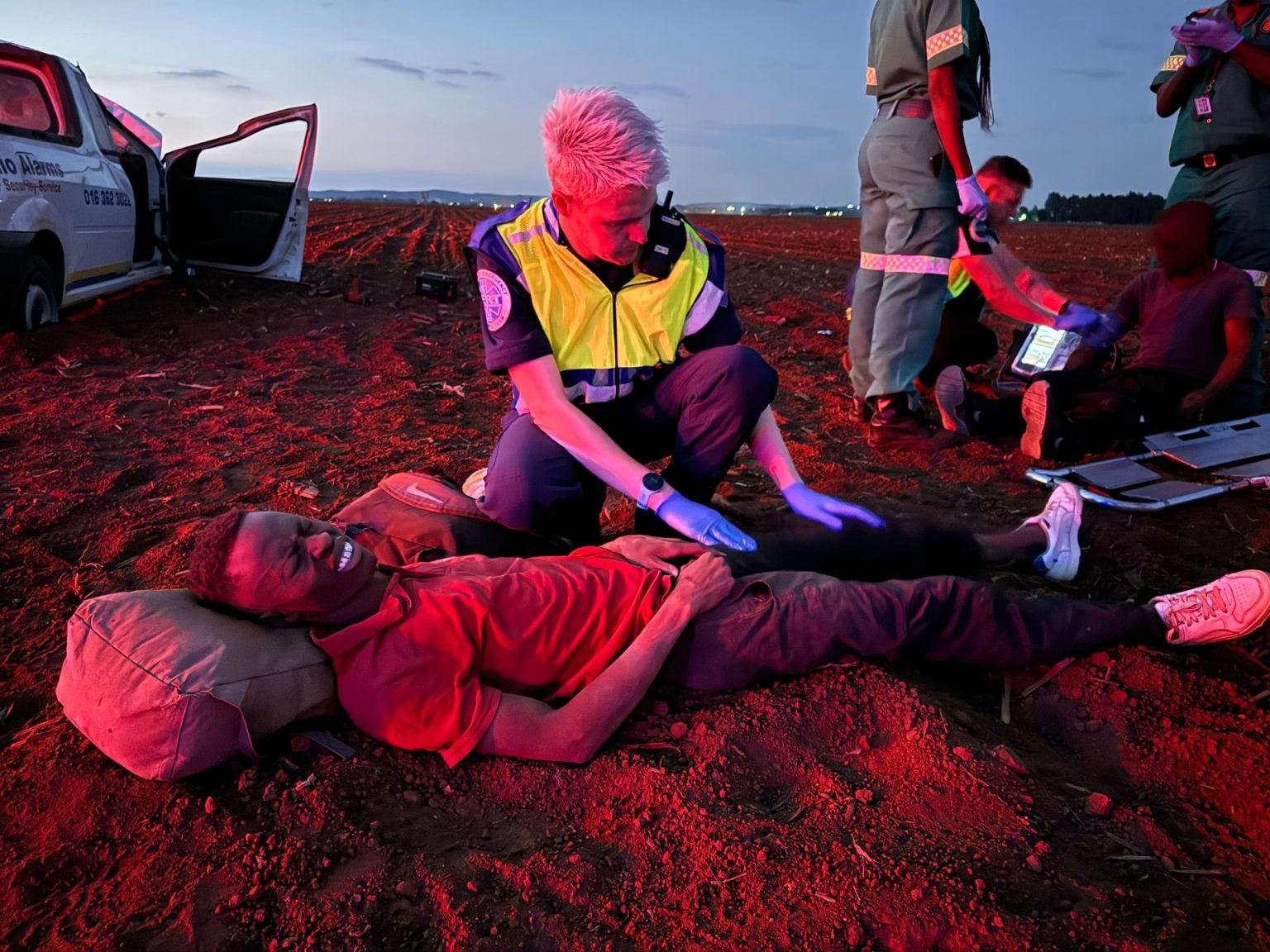In the crime-afflicted city of Johannesburg, South Africa, paramedic Sonia experiences a terrifying incident while responding to a medical emergency. In Meyerton, she is confronted by armed robbers during a call for a patient suffering from a brain embolism. Initially mistaking the intruders for security personnel due to the affluent setting, Sonia’s fear escalates as she realizes the life-threatening nature of the situation. The gunmen threaten her life, demanding she remain quiet while robbing her of her jewelry and intimidating her with violent threats. Following a moment of uncertainty, Sonia hears a car engine, indicating the assailants’ departure, and rushes to check her patient. Although they require urgent care, police eventually arrive, restoring a semblance of safety. However, a wave of post-traumatic stress hits Sonia days later, leading her to seek counseling to cope with the psychological aftermath of the traumatic event.
The overall context of violence in South Africa reveals alarming statistics, with the country holding the fifth highest crime rate globally, as reported by the World Population Review. Emergency medical services (EMS) personnel have increasingly faced assaults on duty, which have sometimes resulted in serious injury or even death. Foster Mohale, a spokesperson for the National Department of Health, highlights a disturbing trend, stating that attacks have risen since 2014, with reported incidents fluctuating between 30 to 109 annually. This disturbing escalation paints a dire picture of the challenges faced by first responders while they strive to provide life-saving assistance in a perilous environment.
On a quieter night, Sonia’s ambulance team attends to a minor accident, allowing her time to connect with colleagues from a volunteer service. Paramedics Cecil Parsons and Gavin Arrow work for the Community Emergency Response Team South Africa, which offers crucial emergency support, often at no cost to the patients. However, their night soon takes a turn as they respond to a more severe incident involving multiple injuries from a highway accident. Parsons and Arrow’s commitment to helping others runs parallel with their awareness of the increasing risks associated with their work, including potential attacks during calls. Parsons shares a harrowing experience of being targeted during an attempted hold-up while responding to another emergency. Despite the immediate danger they faced, they persevered in their duty to provide care, reflecting the grave realities paramedics navigate in their daily work.
The situation for EMS workers across South Africa presents an uphill battle, with varying degrees of safety and security for those involved in emergency response. With over 200 private ambulance services and a national government emergency service, the tracking of incidents becomes increasingly challenging. Oliver Wright from the South African Private Ambulance & Emergency Services Association underscores the rising threat, signifying a broader systemic failure in public safety. While organizations attempt to designate “Red Zones” where ambulance crews require police escorts, the protocol is fraught with limitations, as urgent emergencies may occur precisely within these hazardous areas. Despite some stabilization of attack rates due to measures taken in law enforcement, the situation remains volatile, requiring stronger prioritization of crime prevention at a national level to ensure the safety of all emergency medical personnel.
As the chief wave of ambulance services responds to emergencies, the crews continually brace for dangerous situations, with apprehension lingering in their hearts. The case of Parsons is revealing, as he arrives at a mass-casualty incident and must prioritize care, often treating individuals based on the severity of their injuries. The nature of EMS work means they often have to operate independently, with limited visibility from law enforcement until they can secure the scene. Parsons vividly recalls situations laced with peril, such as a gang-related stabbing where they were left to simulate life-saving measures on a deceased patient in order to protect themselves from potential harm. His experience highlights a grim truth: the life of an EMS worker is constantly overshadowed by the threat of violence, necessitating a delicate balance between duty and self-preservation.
Paramedics like Ronnie Motanyane, who work for a private medical service, add depth to the tales of fear within the profession. While enduring threats during his work, he notes a bittersweet acknowledgment that such violence is now an expected part of their reality. Motanyane recounts how his attackers violently stripped him of his possessions while threatening his life yet were ultimately satisfied with financial gain, releasing him unharmed. The emotional toll of such experiences cannot be understated—they impart a lingering anger and anxiety that may resurface in seemingly mundane moments. While they choose to withstand the risk for the sake of aiding others, their narratives underscore the urgent need for systemic change to address crime and allow emergency responders to perform their life-saving missions in a secure environment.
In summary, the increasing violence directed toward paramedics in South Africa illustrates the complex interplay between public service and personal safety. As paramedics like Sonia, Parsons, and Motanyane continue to bravely confront their dangerous realities, the public’s safety and the integrity of emergency services hang in a delicate balance. It is imperative for the South African government to prioritize crime prevention and safety measures to protect those who serve on the front lines of emergency care. Only through collaborative efforts can a safer professional environment be fostered, enabling EMS personnel to fulfill their roles without the persistent fear of violence that currently undermines their crucial services.

